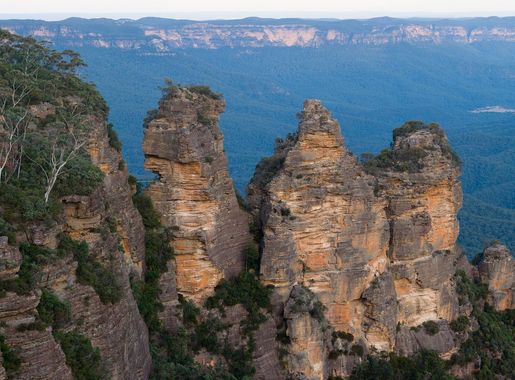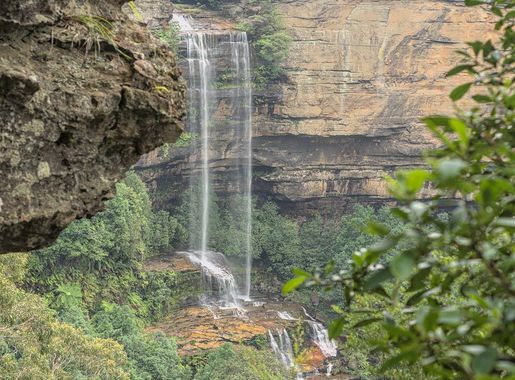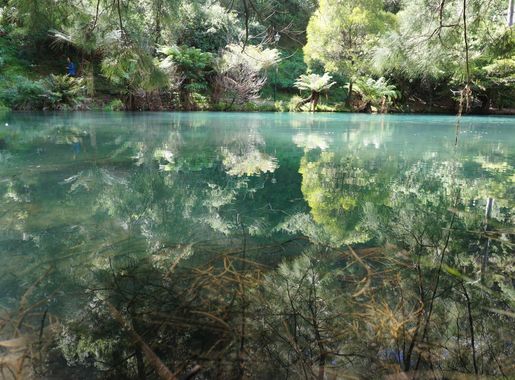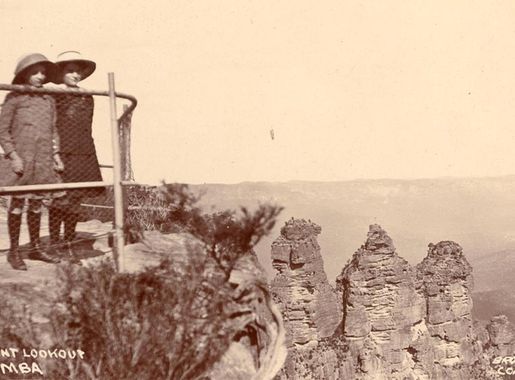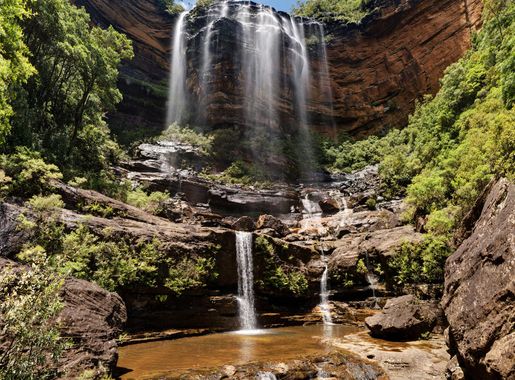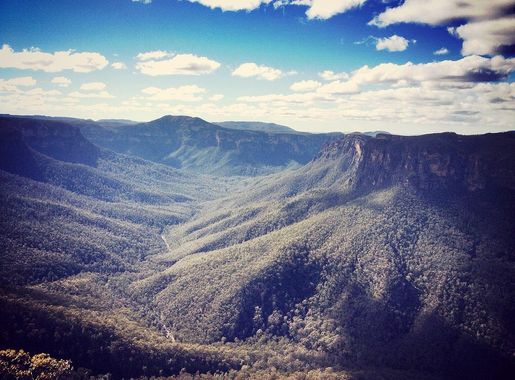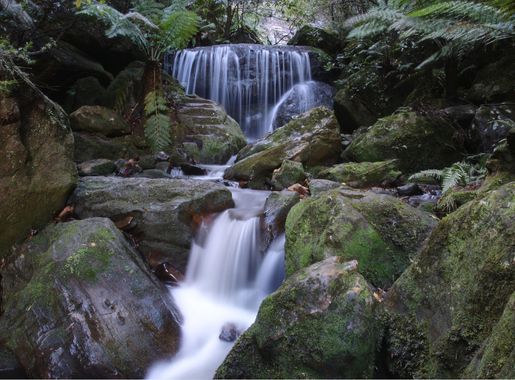
The Majestic Blue Mountains National Park
Explore the enchanting Blue Mountains National Park, where lush rainforests, stunning cliffs, and ancient rock formations create an unforgettable adventure near Sydney.
The Blue Mountains National Park in Australia is a stunning natural wonder that offers a unique blend of lush rainforests, rugged cliffs, and ancient rock formations. Located just a short drive from Sydney, this UNESCO World Heritage site is a paradise for nature lovers and adventure seekers alike. The park is named after the blue haze created by the vast eucalyptus forests, which release droplets of oil into the atmosphere, refracting sunlight and giving the mountains their characteristic blue hue. Visitors to the Blue Mountains National Park can explore a network of walking tracks that cater to all fitness levels. From easy strolls to challenging hikes, there is something for everyone. Popular trails include the Grand Canyon Walk, the Three Sisters Walk, and the Wentworth Falls Track. Along the way, you'll encounter breathtaking viewpoints, cascading waterfalls, and diverse wildlife including kangaroos, koalas, and a variety of bird species. In addition to hiking, the park offers numerous other activities such as rock climbing, abseiling, and mountain biking. For a more relaxed experience, take a scenic drive through the park or enjoy a picnic at one of the many designated areas. Don't miss the chance to visit cultural sites such as the ancient Aboriginal rock art sites, which provide a glimpse into the rich Indigenous heritage of the region. The charming nearby towns of Katoomba and Leura offer delightful cafes, boutique shops, and cozy accommodations, making the Blue Mountains an ideal destination for both day trips and extended stays.
Local tips in Blue Mountains National Park
- Visit early in the morning to avoid crowds and enjoy the tranquility of the park.
- Wear comfortable, sturdy footwear suitable for hiking and bring plenty of water.
- Check the weather forecast before your trip as conditions can change quickly.
- Don't forget your camera to capture the stunning landscapes and wildlife.
- Consider taking a guided tour to learn more about the park’s natural and cultural history.
The Majestic Blue Mountains National Park
The Blue Mountains National Park in Australia is a stunning natural wonder that offers a unique blend of lush rainforests, rugged cliffs, and ancient rock formations. Located just a short drive from Sydney, this UNESCO World Heritage site is a paradise for nature lovers and adventure seekers alike. The park is named after the blue haze created by the vast eucalyptus forests, which release droplets of oil into the atmosphere, refracting sunlight and giving the mountains their characteristic blue hue. Visitors to the Blue Mountains National Park can explore a network of walking tracks that cater to all fitness levels. From easy strolls to challenging hikes, there is something for everyone. Popular trails include the Grand Canyon Walk, the Three Sisters Walk, and the Wentworth Falls Track. Along the way, you'll encounter breathtaking viewpoints, cascading waterfalls, and diverse wildlife including kangaroos, koalas, and a variety of bird species. In addition to hiking, the park offers numerous other activities such as rock climbing, abseiling, and mountain biking. For a more relaxed experience, take a scenic drive through the park or enjoy a picnic at one of the many designated areas. Don't miss the chance to visit cultural sites such as the ancient Aboriginal rock art sites, which provide a glimpse into the rich Indigenous heritage of the region. The charming nearby towns of Katoomba and Leura offer delightful cafes, boutique shops, and cozy accommodations, making the Blue Mountains an ideal destination for both day trips and extended stays.
When is the best time to go to Blue Mountains National Park?
Iconic landmarks you can’t miss
Three Sisters walk
Experience the natural beauty and cultural significance of the iconic Three Sisters at the breathtaking Three Sisters Walk in the Blue Mountains.

Scenic World
Explore Scenic World in Katoomba and experience breathtaking views, thrilling rides, and the lush beauty of the Blue Mountains.
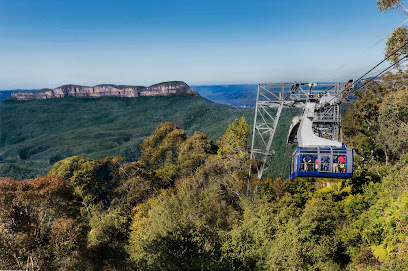
Echo Point Lookout (Three Sisters)
Discover the spectacular Echo Point Lookout, your gateway to the iconic Three Sisters in the stunning Blue Mountains, Australia.
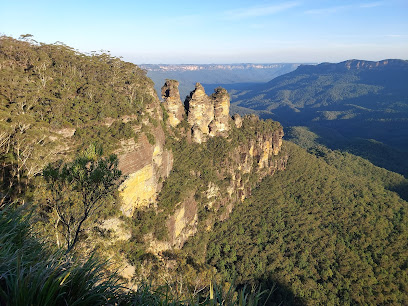
Katoomba Falls
Experience the breathtaking beauty of Katoomba Falls in the Blue Mountains, a top destination for nature lovers and adventure seekers in New South Wales.
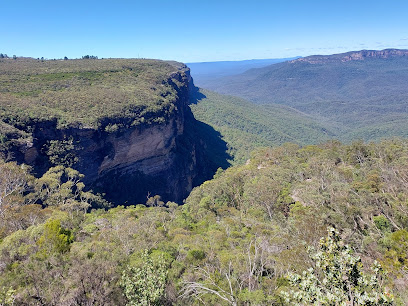
Wentworth Falls
Experience the breathtaking beauty of Wentworth Falls, a stunning waterfall and hiking destination in the heart of New South Wales' Blue Mountains.
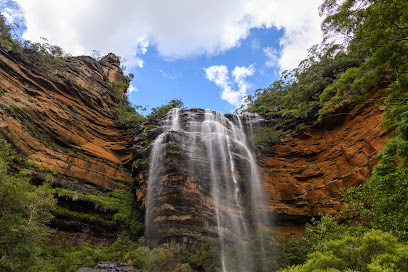
Lincoln's Rock
Experience the breathtaking views at Lincoln's Rock, a stunning lookout in the Blue Mountains, perfect for nature lovers and adventure seekers.
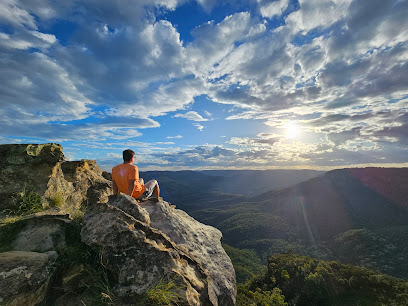
Govetts Leap lookout
Explore breathtaking views at Govetts Leap Lookout in the Blue Mountains, a must-visit scenic spot filled with stunning landscapes and adventure.
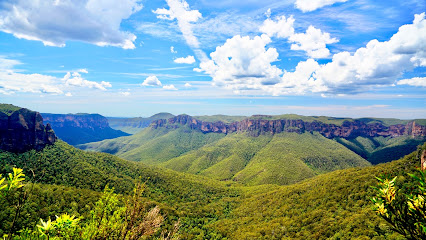
Grand Canyon Walking Track
Discover breathtaking views and rich biodiversity along the Grand Canyon Walking Track in Blue Mountains National Park, a true gem for nature lovers.
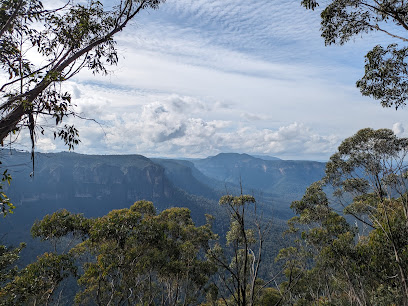
Scenic Skyway
Discover the breathtaking Scenic Skyway in Katoomba, offering stunning views of the Blue Mountains and unforgettable adventure.
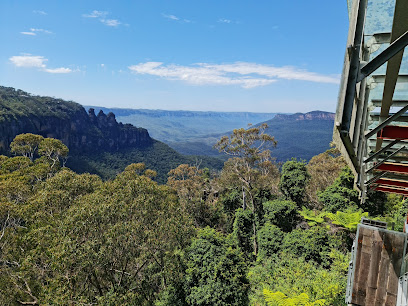
Evans Lookout
Discover stunning panoramic views and hiking adventures at Evans Lookout in the breathtaking Blue Mountains National Park.
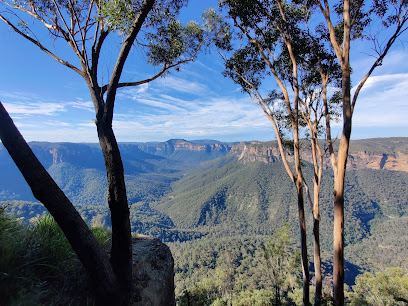
Giant Stairway
Discover the breathtaking Giant Stairway in Blue Mountains National Park, where adventure meets stunning natural beauty in every step.
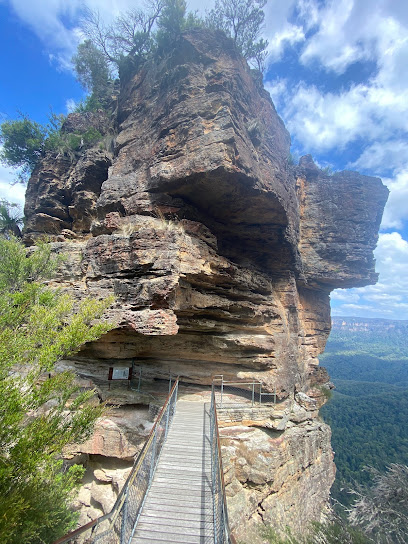
Everglades House & Gardens
Discover the enchanting Everglades House & Gardens, a historic treasure in the Blue Mountains, blending natural beauty with rich heritage.
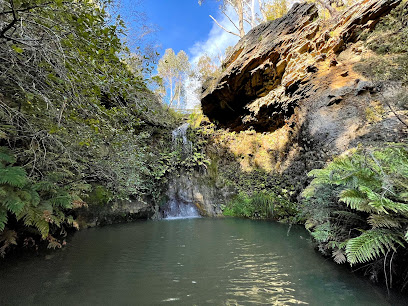
Sublime Point Lookout
Experience breathtaking views and natural beauty at Sublime Point Lookout, a must-visit destination in the heart of the Blue Mountains, New South Wales.

Eagle Hawk Lookout
Discover the breathtaking views and serene beauty of Eagle Hawk Lookout in the Blue Mountains, a must-see scenic spot for every traveler.

Leura Cascades Picnic Area
Leura Cascades Picnic Area: A serene picnic ground in the Blue Mountains with stunning waterfalls and lush surroundings, perfect for a nature escape.
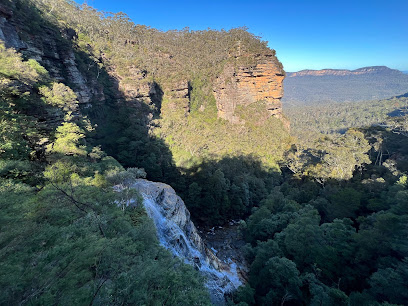
Unmissable attractions to see
Jenolan Caves
Uncover the stunning limestone formations and rich biodiversity of Jenolan Caves, a natural wonder in New South Wales, Australia.
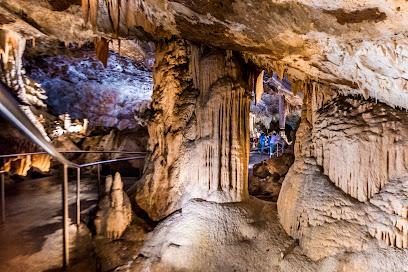
Blue Mountains Heritage Centre
Explore the Blue Mountains Heritage Centre for insights into nature, art, and the rich heritage of New South Wales' most stunning landscapes.
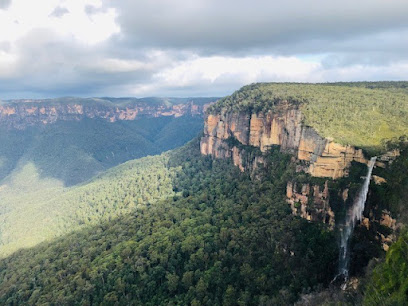
Norman Lindsay Gallery & Museum
Explore the stunning Norman Lindsay Gallery & Museum in Faulconbridge, where art and nature beautifully converge in a tranquil setting.
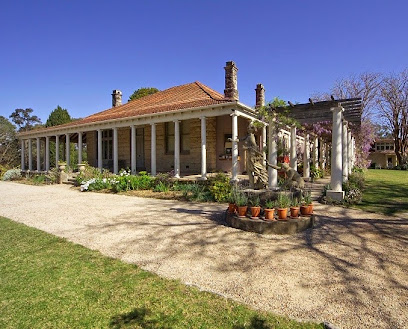
Jamison Lookout
Discover the stunning vistas and natural beauty of Jamison Lookout in the heart of the Blue Mountains, a true gem for every traveler.
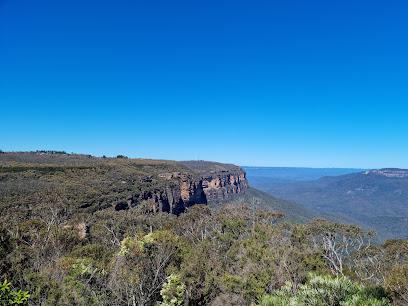
Jamison Lookout
Experience the breathtaking beauty of Jamison Lookout with stunning views of Jamison Valley and Mount Solitary in New South Wales' Blue Mountains.
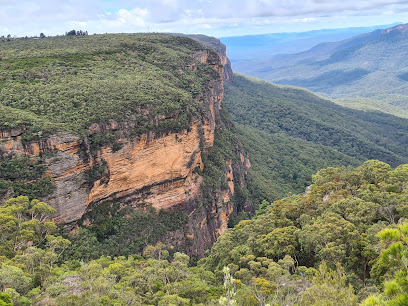
Elysian Rock Lookout
Experience breathtaking views and tranquil nature at Elysian Rock Lookout in the heart of the stunning Blue Mountains National Park.
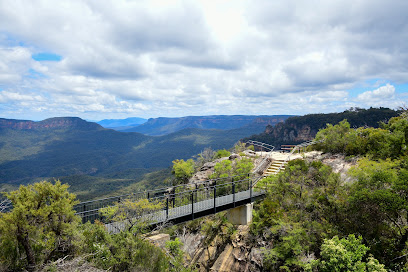
Glow Worm Tunnel
Experience the magical Glow Worm Tunnel in Wollemi National Park, where nature's lights create an unforgettable spectacle in the heart of New South Wales.

Windyridge Garden
Explore the breathtaking landscapes of Windyridge Garden in Mount Wilson, a serene escape featuring vibrant flora and tranquil pathways for all nature lovers.

Anvil Rock Lookout
Discover the stunning beauty of Anvil Rock Lookout in Blue Mountains National Park, a must-see scenic spot for nature lovers and adventure seekers.
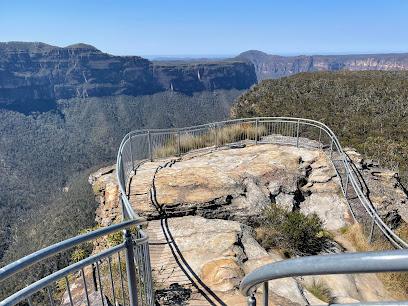
Lennox Bridge
Discover the historic Lennox Bridge in Glenbrook, a stunning blend of history and nature featuring hiking trails and breathtaking views.

Scenic Walkway
Discover the breathtaking Scenic Walkway in Blue Mountains National Park, where adventure meets nature in stunning landscapes.
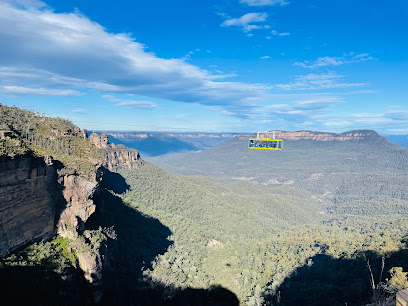
Darwins walk
Explore the enchanting Darwin's Walk in Wentworth Falls, showcasing breathtaking views and the stunning beauty of the Blue Mountains.
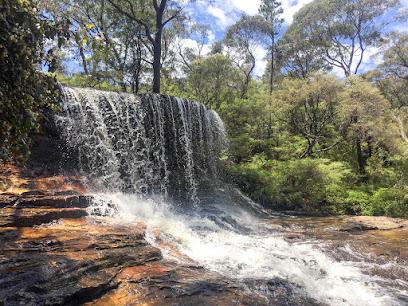
Ruined Castle
Experience the breathtaking beauty of Ruined Castle in Cedar Valley, a must-visit tourist attraction in New South Wales offering stunning views and hiking trails.

Horseshoe Falls walking track
Explore the stunning Horseshoe Falls Walking Track in Hazelbrook, NSW, a perfect hiking destination for nature lovers and adventure seekers.
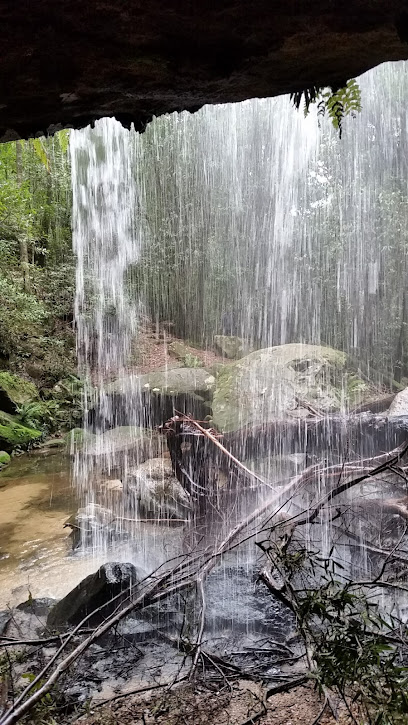
Bridal Veil Falls
Discover the magnificent Bridal Veil Falls in the Blue Mountains, a stunning natural attraction perfect for all nature lovers and adventure seekers.
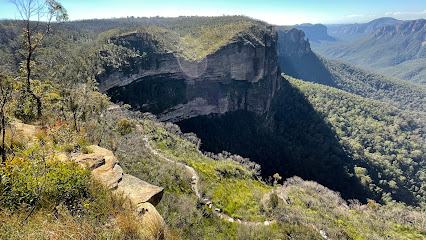
Essential places to dine
The Hydro Majestic Hotel Blue Mountains
Discover timeless elegance at The Hydro Majestic Hotel in the heart of Blue Mountains – where luxury meets breathtaking natural beauty.
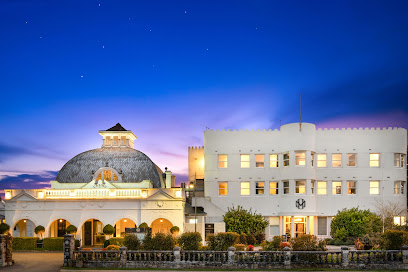
The Carrington Hotel
Experience luxury and history at The Carrington Hotel in Katoomba - your gateway to the breathtaking Blue Mountains.
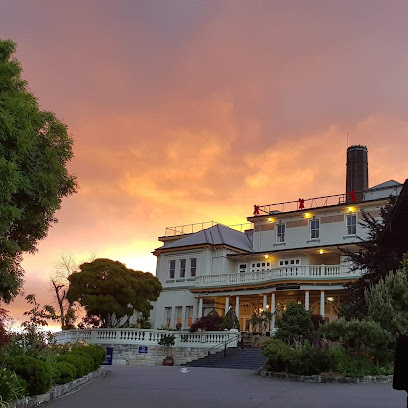
Aunty Ed's Restaurant and Bar
Discover Aunty Ed's Restaurant and Bar in Katoomba - where delicious meals meet live music in a cozy atmosphere amidst stunning Blue Mountains scenery.
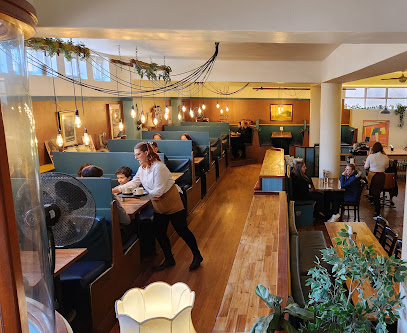
Lilianfels Blue Mountains Resort & Spa
Experience luxury amidst nature at Lilianfels Blue Mountains Resort & Spa—where relaxation meets adventure in breathtaking surroundings.

8Things Eatery
Experience the essence of Katoomba's culinary scene at 8Things Eatery—where local ingredients meet global flavors.
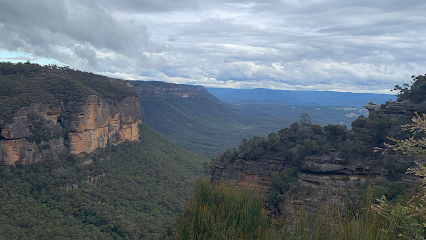
Basil Nut Cafe & Restaurant Katoomba
Discover the vibrant tastes of Southeast Asia at Basil Nut Cafe & Restaurant in Katoomba - where flavor meets tradition.

Avalon Restaurant & Cocktail Bar
Discover the vibrant flavors of Avalon Restaurant & Cocktail Bar in Katoomba—where exquisite cuisine meets lively ambiance in New South Wales.
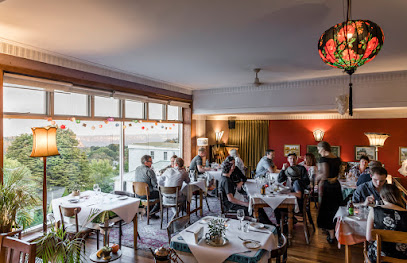
The Bunker - Leura
Discover the culinary delights of The Bunker in Leura - where fine dining meets cozy café charm amidst stunning Blue Mountains scenery.
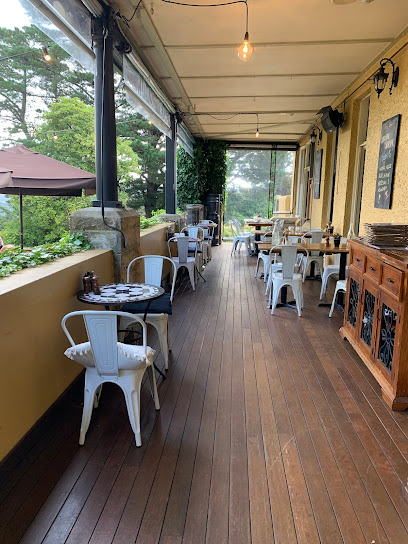
Conservation Hut Cafe (Under New Management)
Experience the best breakfast and coffee at Conservation Hut Cafe, nestled in Wentworth Falls amidst stunning Blue Mountains scenery.
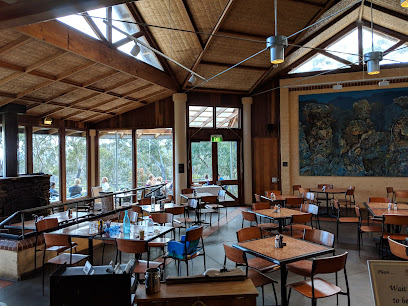
Polar Bear Of Leura
Experience culinary excellence at Polar Bear Of Leura – where fresh local ingredients meet creative cuisine in a charming setting.
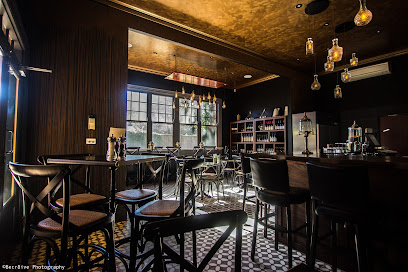
Pins On Lurline
Experience exquisite Australian cuisine in a charming setting at Pins On Lurline in Katoomba - where every meal is a celebration.
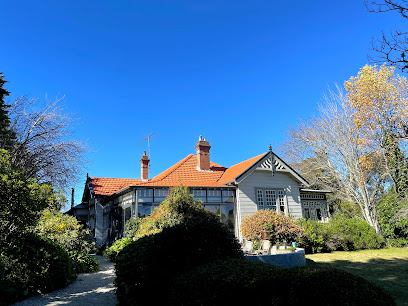
Rustico
Experience authentic Italian flavors at Rustico in Katoomba - home to delicious wood-fired pizzas and a cozy dining atmosphere.
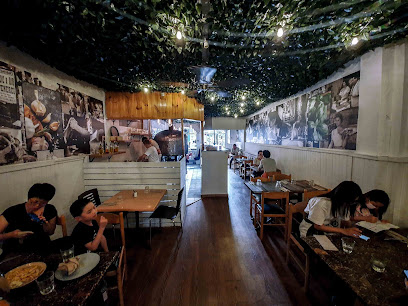
Arrana
Experience culinary excellence at Arrana - a fine dining gem in Springwood's picturesque Blue Mountains.
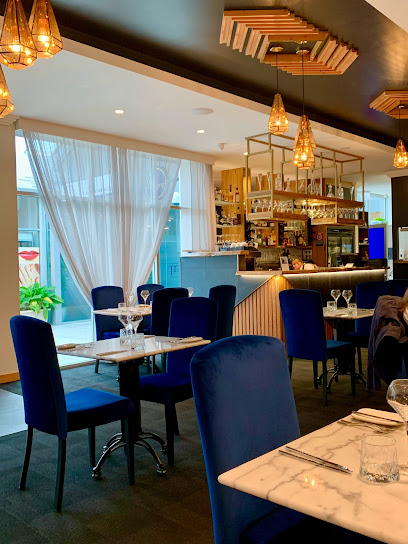
Michelangelo's Italian Restaurant
Discover authentic Italian flavors at Michelangelo's Italian Restaurant in Blaxland - where every meal is a celebration of culinary excellence.
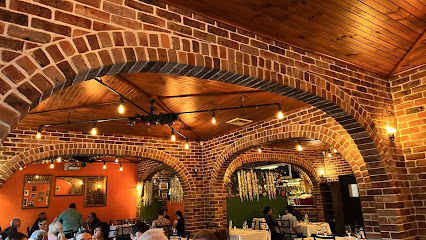
Mountain Culture Brewery - Katoomba
Experience craft beer excellence at Mountain Culture Brewery in Katoomba—where flavors meet breathtaking mountain views.
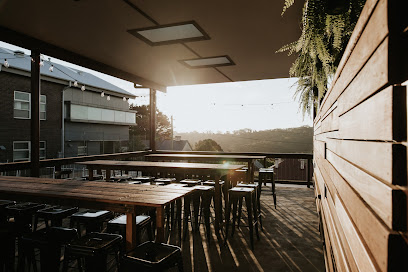
Markets, malls and hidden boutiques
Three Sisters walk
Explore the iconic Three Sisters Walk in the Blue Mountains, a stunning hiking trail with breathtaking views and rich cultural heritage.
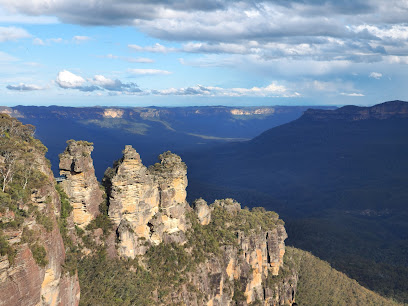
Bygone Beautys Treasured Teapot Museum & Tearooms
Discover the charm of Bygone Beautys Treasured Teapot Museum & Tearooms, where history meets a delightful tea experience in the heart of Leura.
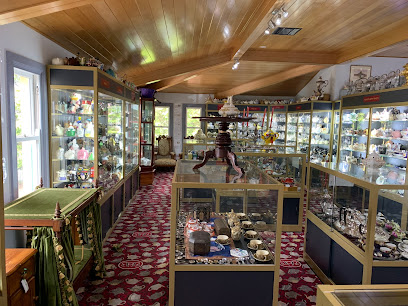
The Lookout Echo Point
Experience breathtaking views and natural beauty at The Lookout Echo Point in Katoomba, the gateway to the stunning Blue Mountains.
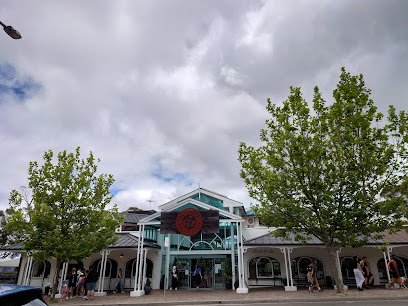
Blue Mountains Heritage Centre
Explore the Blue Mountains Heritage Centre for a rich blend of nature, art, and local culture in an iconic Australian landscape.
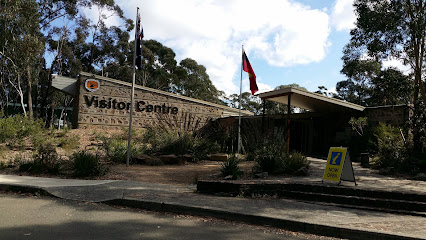
Teddy Sinclair
Discover the charm of Teddy Sinclair in Leura, where unique gifts, fashion, and local craftsmanship await to delight every traveler.
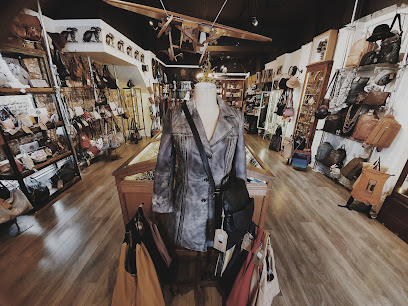
Blue Mountains Ugg Boots
Explore authentic Australian craftsmanship at Blue Mountains Ugg Boots, your destination for cozy, stylish footwear in the heart of the Blue Mountains.
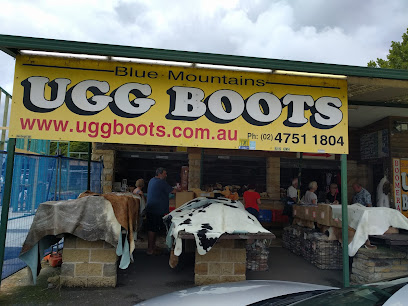
The Hattery
Discover unique styles and exceptional craftsmanship at The Hattery, Katoomba’s premier destination for fashionable hats in the stunning Blue Mountains.

Odd Mountain Oddities
Discover a treasure trove of unique gifts and antiques at Odd Mountain Oddities in the heart of Katoomba, perfect for every traveler.

Kmart Katoomba K Hub
Explore Kmart Katoomba K Hub for all your shopping needs, featuring fashion, homewares, toys, and more in the heart of New South Wales.

AU-RANGE
Explore AU-RANGE, the ultimate souvenir store in Katoomba, where unique Australian treasures await your discovery amidst the stunning Blue Mountains.
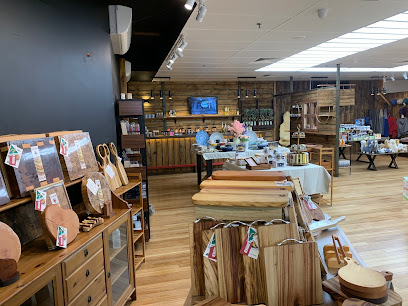
Eco with Love- Blue Mountains
Discover Eco with Love in the Blue Mountains - your destination for unique, sustainable gifts and artisan creations.

Katoomba Vintage Emporium
Explore the captivating Katoomba Vintage Emporium, a haven for antique lovers and vintage seekers in the stunning Blue Mountains.
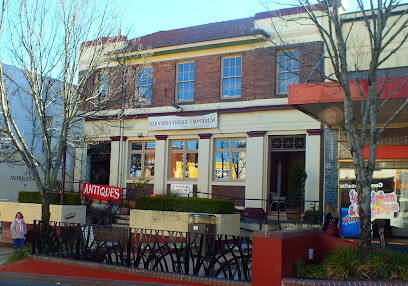
iKOU
Discover unique gifts, handcrafted candles, and luxurious cosmetics at iKOU, Leura's premier destination for beauty and charm.
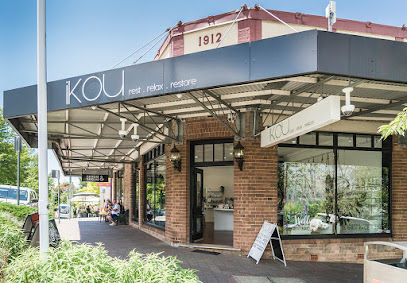
Leura Toy Shop
Explore the enchanting Leura Toy Shop, a whimsical haven for toy lovers in the heart of Leura, offering a delightful selection for all ages.

It's The Little Things
Discover unique fashion and accessories at It's The Little Things in Wentworth Falls, perfect for tourists seeking stylish souvenirs.
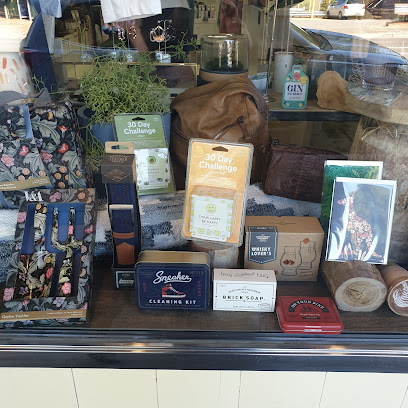
Essential bars & hidden hideouts
Station Bar & Woodfired Pizza
Discover the perfect blend of woodfired pizza and craft beers at Station Bar in Katoomba, a delightful stop in the heart of the Blue Mountains.

Aunty Ed's Restaurant and Bar
Discover the flavors of Aunty Ed's Restaurant and Bar in Katoomba, where delicious food meets live music in the heart of the Blue Mountains.

The Old City Bank Bar and Brasserie
Discover Katoomba's historic dining gem, The Old City Bank Bar and Brasserie, where culinary delights meet rich heritage in the heart of the Blue Mountains.
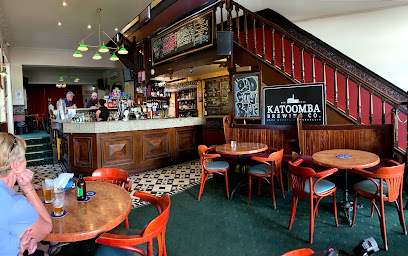
Avalon Restaurant & Cocktail Bar
Discover the culinary delights of Avalon Restaurant & Cocktail Bar in Katoomba, where exquisite dishes and crafted cocktails await in a charming atmosphere.
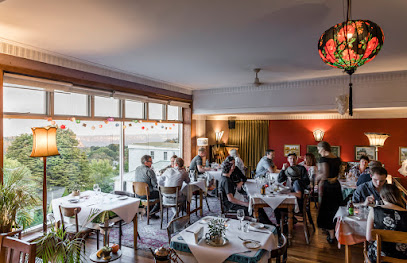
Alexandra Hotel
Discover the charm of Leura at Alexandra Hotel, a cozy bar and hotel perfect for relaxation and exploration in the stunning Blue Mountains.
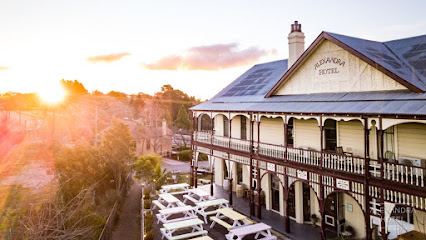
The Bootlegger Bar Katoomba
Experience the vibrant atmosphere and delicious grill offerings at The Bootlegger Bar, Katoomba's favorite local hangout with live music and friendly vibes.
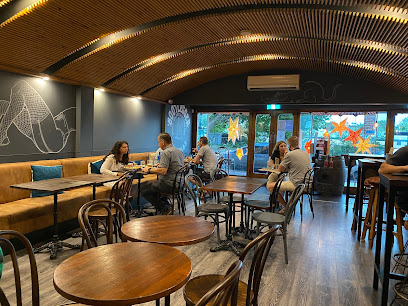
Mountain Culture Brewery - Katoomba
Experience the spirit of the Blue Mountains at Mountain Culture Brewery, where exceptional craft beers and a vibrant atmosphere await.
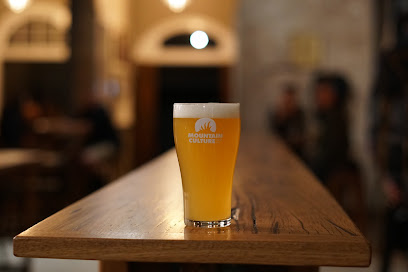
The Henry Blue Mountains
Experience the essence of the Blue Mountains at The Henry, where stunning scenery meets a vibrant pub atmosphere in New South Wales.
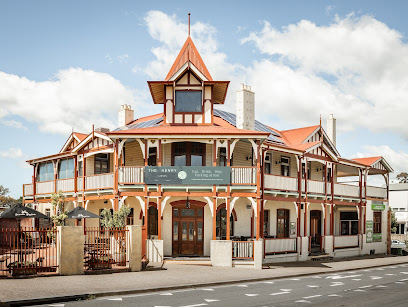
Royal Hotel
Discover the Royal Hotel in Springwood: A charming pub, bistro, and hotel offering a cozy retreat with local flavors and community spirit.
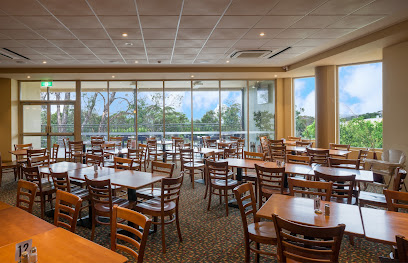
Darley's Restaurant
Experience culinary excellence at Darley's Restaurant in Katoomba, where stunning views and exquisite dishes create unforgettable memories.

Winmalee Tavern
Experience the warmth of Australian hospitality at Winmalee Tavern, your go-to spot for delicious food, local brews, and lively entertainment.
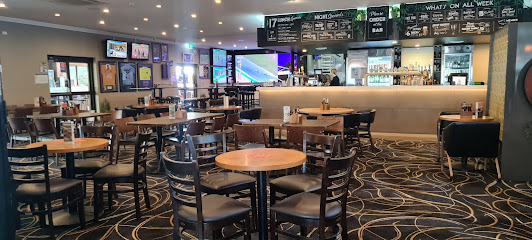
BLAQ Restaurant & Bar
Experience modern Australian delicacies and vibrant cocktails at BLAQ Restaurant & Bar in Blackheath, the perfect dining spot for every occasion.
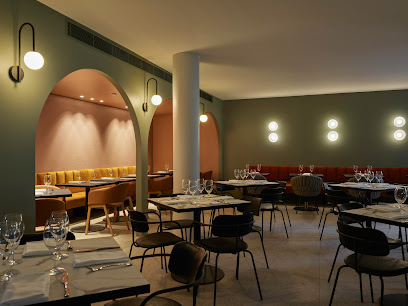
Bowery
Experience the vibrant culture and culinary delights at The Bowery in Katoomba, a cozy bar and restaurant in the heart of the Blue Mountains.
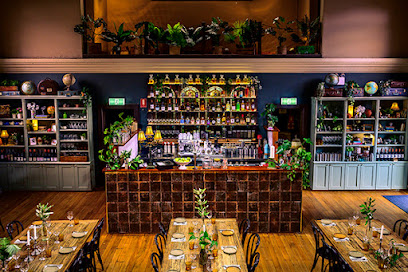
Echoes Restaurant & Bar Blue Mountains
Discover a culinary gem in the Blue Mountains at Echoes Restaurant & Bar, where breathtaking views meet exquisite Australian cuisine.
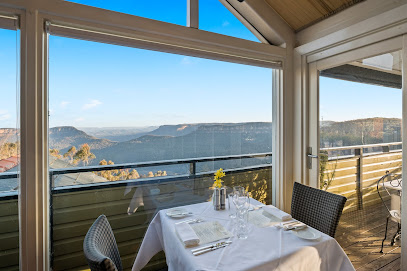
Elysian Bar
Discover Elysian Bar in Katoomba, where exceptional cuisine meets innovative cocktails in a cozy atmosphere.
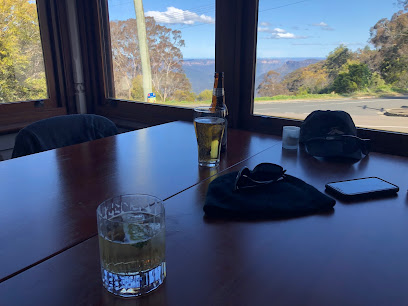
Local Phrases about Blue Mountains National Park
-
- HelloG'day
[g'day] - GoodbyeSee ya
[see ya] - YesYeah
[yeah] - NoNah
[nah] - Please/You're welcomePlease/No worries
[please/no worries] - Thank youCheers
[cheers] - Excuse me/SorrySorry
[sorry] - How are you?How ya goin'?
[how ya goin'] - Fine. And you?Good. You?
[good. you?] - Do you speak English?Speak English?
[speak english?] - I don't understandNo idea mate
[no idea mate]
- HelloG'day
-
- I'd like to see the menu, pleaseMenu, please
[menu, please] - I don't eat meatNo meat
[no meat] - Cheers!Cheers!
[cheers!] - I would like to pay, pleaseBill, please
[bill, please]
- I'd like to see the menu, pleaseMenu, please
-
- Help!Help!
[help!] - Go away!Piss off!
[piss off!] - Call the Police!Call the cops!
[call the cops!] - Call a doctor!Get a doctor!
[get a doctor!] - I'm lostLost
[lost] - I'm illSick
[sick]
- Help!Help!
-
- I'd like to buy...I buy...
[i buy...] - I'm just lookingJust looking
[just looking] - How much is it?How much?
[how much?] - That's too expensiveToo much
[too much] - Can you lower the price?Lower price?
[lower price?]
- I'd like to buy...I buy...
-
- What time is it?What's the time?
[what's the time?] - It's one o'clockOne o'clock
[one o'clock] - Half past (10)Half ten
[half ten] - MorningMornin'
[mornin'] - AfternoonArvo
[arvo] - EveningEvenin'
[evenin'] - YesterdayYesty
[yesty] - TodayToday
[today] - TomorrowTomorra
[tomorra] - 1One
[one] - 2Two
[two] - 3Three
[three] - 4Four
[four] - 5Five
[five] - 6Six
[six] - 7Seven
[seven] - 8Eight
[eight] - 9Nine
[nine] - 10Ten
[ten]
- What time is it?What's the time?
-
- Where's a/the...?Where's the...?
[where's the...?] - What's the address?Address?
[address?] - Can you show me (on the map)?Show me (on map)?
[show me (on map)?] - When's the next (bus)?Next (bus)?
[next (bus)?] - A ticket (to ....)Ticket (to ...)
[ticket (to ...)]
- Where's a/the...?Where's the...?
History of Blue Mountains National Park
-
The Blue Mountains have been inhabited by the Gundungurra, Darug, and Wiradjuri peoples for millennia. These Indigenous groups have a deep spiritual connection to the land, with sacred sites, rock art, and traditional stories that speak of the area's rich cultural heritage. The Three Sisters rock formation is one of the most iconic landmarks with Aboriginal significance, embodying legends passed down through generations.
-
In 1813, explorers Gregory Blaxland, William Lawson, and William Charles Wentworth successfully crossed the Blue Mountains, overcoming the natural barrier that had previously hindered European expansion into the interior of Australia. Their journey paved the way for the establishment of new settlements and the expansion of pastoral activities.
-
Following the successful crossing by Blaxland, Lawson, and Wentworth, the construction of the Great Western Highway began in 1814. The highway facilitated the movement of people and goods between Sydney and the inland regions, significantly contributing to the economic development of New South Wales.
-
Built between 1866 and 1869, the Zig Zag Railway was an engineering marvel of its time. It was designed to navigate the steep terrain of the Blue Mountains, enabling efficient transport of goods and passengers. Today, it stands as a popular tourist attraction and a testament to the ingenuity of 19th-century engineering.
-
Blue Mountains National Park was formally established in 1959. Encompassing over 247,000 hectares of diverse landscapes, the park was created to protect the unique flora, fauna, and geological features of the region. It has since become a UNESCO World Heritage site, recognized for its outstanding universal value.
-
Throughout the 20th century, the Blue Mountains became a focal point for conservation efforts. Environmentalists and local communities worked tirelessly to protect the area from threats such as deforestation, mining, and urban development. These efforts culminated in the Blue Mountains being added to the UNESCO World Heritage list in 2000.
-
The Blue Mountains are home to numerous cultural landmarks and attractions that draw visitors from around the world. These include the Scenic World, the Jenolan Caves, and the historic town of Katoomba. Each of these sites offers a unique glimpse into the natural beauty and cultural history of the region.
Blue Mountains National Park Essentials
-
Blue Mountains National Park is located in New South Wales, Australia, approximately 80 kilometers west of Sydney. The most convenient way to get there is by car via the M4 Motorway, which takes about 1.5 to 2 hours. Alternatively, you can take a train from Sydney's Central Station to Katoomba, the main town in the Blue Mountains. The train journey takes approximately 2 hours and offers scenic views along the way.
-
Once in the Blue Mountains, the best way to explore the area is by car, which offers flexibility to visit various lookouts, hiking trails, and towns at your own pace. Public buses also operate within the region and connect major attractions. For those who prefer not to drive, there are guided tours available that include transportation. Additionally, the Blue Mountains Explorer Bus offers a hop-on-hop-off service that covers key points of interest.
-
The official currency in Australia is the Australian Dollar (AUD). Credit and debit cards are widely accepted in most hotels, restaurants, and shops in the Blue Mountains. ATMs are available in larger towns like Katoomba and Leura. While electronic payments are common, it is advisable to carry some cash, especially if you plan to visit more remote areas or smaller establishments.
-
The Blue Mountains are generally considered safe for tourists. However, it is essential to exercise standard precautions. Avoid hiking alone, especially in remote areas, and always inform someone of your plans. Be cautious of wildlife and stay on marked trails. While there are no specific high-crime areas targeting tourists, it is wise to keep your belongings secure and be vigilant in crowded places.
-
In case of emergency, dial 000 for immediate assistance, which connects you to police, fire, and medical services. There are medical facilities and pharmacies in larger towns such as Katoomba. It is highly recommended to have travel insurance that covers medical emergencies and outdoor activities. For minor health concerns, local pharmacies can provide over-the-counter medications.
-
Fashion: Do wear comfortable and weather-appropriate clothing, especially sturdy hiking shoes for trails. Avoid wearing high heels or flip-flops when hiking. Religion: Do respect any cultural or spiritual sites; some may require modest clothing. Public Transport: Do respect fellow passengers and bus drivers. Don't eat or drink on public transport. Greetings: Do greet people with a friendly 'hello' or 'hi'. Australians are generally informal. Eating & Drinking: Do try local cuisines and cafes. Don't leave food waste behind; always use designated bins.
-
To experience the Blue Mountains like a local, visit the regional markets such as the Blackheath Growers Market for fresh produce and crafts. Engage with locals at cafes and ask for their favorite hiking trails or secret lookouts. Don’t miss the chance to take the scenic railway and skyway at Scenic World for breathtaking views. For a quieter experience, explore the less-visited trails at Mount Victoria or Wentworth Falls.
Trending Landmarks in Blue Mountains National Park
Nearby Cities to Blue Mountains National Park
-
Things To Do in Canberra
-
Things To Do in Byron Bay
-
Things To Do in Melbourne
-
Things To Do in Gold Coast
-
Things To Do in Surfers Paradise
-
Things To Do in Brisbane
-
Things To Do in Noosa
-
Things To Do in Hobart
-
Things To Do in Adelaide
-
Things To Do in Kangaroo Island
-
Things To Do in Airlie Beach
-
Things To Do in The Whitsundays
-
Things To Do in Phillip Island
-
Things To Do in Burnt Pine
-
Things To Do in Kingston

